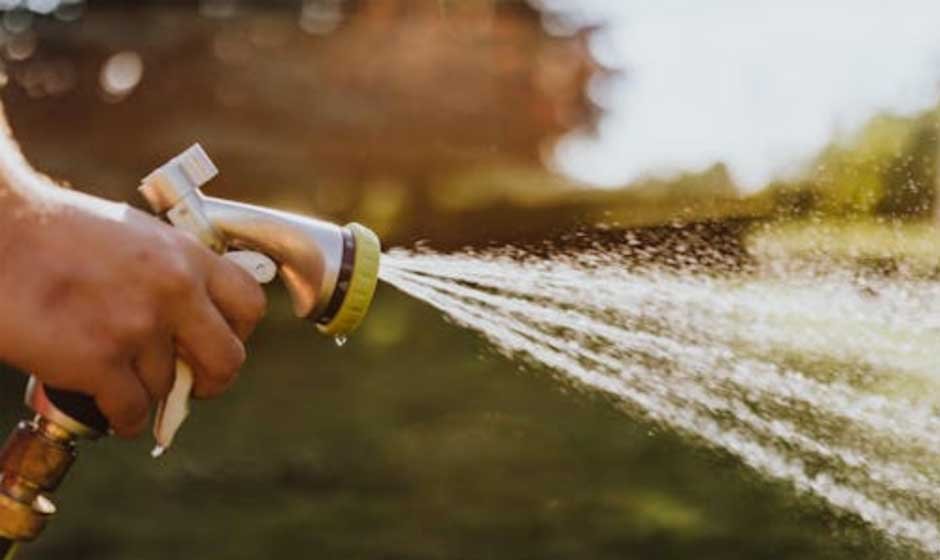A well-kept lawn can make your home look clean and inviting. It adds curb appeal, gives you space to enjoy the outdoors, and even adds value to your property. But taking care of a lawn takes more than just regular mowing or watering.
A lot of homeowners work hard to maintain their yards, but still end up with brown spots, uneven growth, or thinning grass. These problems are frustrating, especially when you’re putting in the effort. The truth is, many lawn care issues come from small, repeated mistakes.
Some of these habits may not seem like a big deal at first, but they can create long-term problems that are expensive to fix. This guide breaks down the most common lawn care mistakes and what you can do instead.
Ignoring Water Waste and Irrigation Issues
One of the most overlooked areas in lawn care is watering. It seems simple: turn on the sprinklers and let them run. However, how and when you water your lawn has a major effect on how healthy your grass stays and how much money you spend.
A big issue is overwatering. It leads to shallow roots, weak growth, and even fungal problems. Runoff is another concern. If water is spilling into the street or sidewalk, it’s doing nothing for your lawn and wasting resources.
Then there’s the problem you can’t always see: leaks. Small leaks in underground lines or broken sprinkler heads often go unnoticed for weeks. During that time, your system might be overwatering one area while barely reaching another. That uneven coverage hurts your lawn and spikes your water bill.
That’s where sprinkler leak detection comes in. It helps find issues in your irrigation system early, before they lead to damage or waste. Whether you’re dealing with dry patches or a sudden rise in your utility costs, leak detection is a smart step. It keeps your watering system working the way it should and helps your yard stay in better shape.
If you spot soggy patches in your lawn, standing water, or oddly green streaks in certain spots, it’s worth checking the system. Regular inspection saves time and prevents bigger problems down the road.
Cutting the Grass Too Short
It might seem like cutting the grass shorter means you won’t have to mow as often. But going too low, known as “scalping”, can actually do more harm than good. When the grass is too short, it exposes the soil to the sun, dries out faster, and leaves your lawn open to weed growth.
Different types of grass need different heights. For most common types, keeping the grass at about 2.5 to 3 inches works well. This height protects the root system, shades the soil, and keeps the lawn looking full.
Use a sharp mower blade so that the grass gets a clean cut. Dull blades tear the grass, which can lead to brown edges and stress. And try not to cut more than one-third of the grass height in a single mow.
Using Too Much Fertilizer
Fertilizer helps grass grow strong and green, but using too much of it can do the opposite. Over-fertilizing burns the grass, leads to yellow spots, and damages the roots. You might see fast growth at first, but the long-term effect is often weak or patchy grass.
A better approach is to apply fertilizer based on your lawn’s actual needs. That starts with a soil test. Many garden centers offer simple kits that show what nutrients are missing. Once you know that, you can pick the right product.
Look for slow-release fertilizers. They feed your lawn gradually over several weeks, reducing the risk of burning. Apply during the growing season, and follow the instructions on the label. Spreading too much—or applying it too often—can create more problems than it solves.
Not Aerating or Dethatching
Over time, lawns get compacted, especially in high-traffic areas like walkways, play zones, or near patios. When the soil is packed down, air, water, and nutrients have a hard time reaching the roots. That slows growth and leads to a thin, tired-looking lawn.
Aerating helps break up the soil. It involves making small holes across the lawn to give roots room to breathe. You can use a manual tool or rent a machine. Fall and spring are the best times to do it.
Thatch is another issue. It’s the layer of dead grass, stems, and roots that builds up between the soil and the green part of your lawn. A little thatch is fine, but too much blocks water and nutrients. If your lawn feels spongy underfoot or water seems to run off rather than soak in, you may need to dethatch.
You can dethatch by raking, using a dethatching machine, or hiring someone who offers the service. Doing this once every few years helps keep your lawn healthy and looking better.
Ignoring Local Lawn Needs
Lawn care isn’t one-size-fits-all. What works in one region or neighborhood might not work in another. Your grass type, soil, and weather patterns all shape how your lawn reacts to care routines.
For example, some grasses prefer more shade while others need full sun. Some require frequent watering, while others tolerate drought. Before choosing seed, fertilizer, or a mowing schedule, find out what type of grass you have.
If you’re not sure, visit a local nursery or ask a nearby landscaping expert. They often know what works best in your area. Matching your care to your lawn’s real needs helps avoid waste and gives you better results.
Skipping Routine Maintenance
Consistency matters in lawn care. Letting too much time pass between mowing, watering, or edging can create more work in the long run. Grass grows unevenly, weeds take over, and trimming becomes harder.
Set a simple routine. Mow once a week during peak growing months. Trim edges every other week. Water early in the morning and adjust based on rainfall. Even quick check-ins keep your lawn from falling behind.
Taking small steps on a regular basis makes lawn care less stressful. Your yard stays healthier, and you avoid costly fixes later.
A good-looking lawn doesn’t happen by accident. It takes steady care and avoiding common mistakes that cause bigger issues down the line. With a few changes in your routine, you can keep your yard healthier, greener, and easier to manage. Smart care today helps your lawn stay strong through every season.










